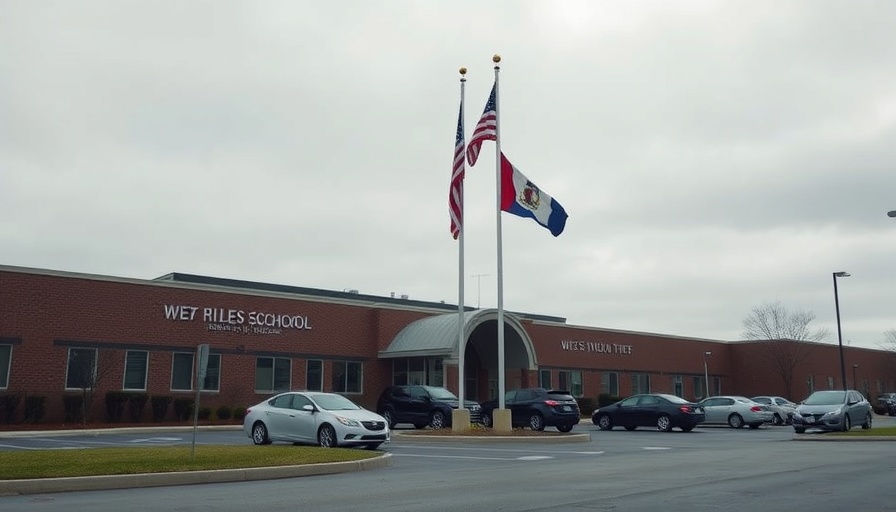
Understanding the Weight of Information
In our fast-paced world where information is at our fingertips, the burden of knowledge can provoke stress and anxiety. As Asmaa Housni explores in her TEDxMcGill talk, the duality of information—empowerment versus overwhelm—shapes our decisions and emotional well-being. This article delves into how professionals can navigate the complexities of receiving critical information, particularly in their career and health journeys.
In 'What to do when you're overwhelmed', Asmaa Housni provides a thought-provoking exploration of how information can empower or paralyze us, prompting a deeper analysis of the effectiveness of our responses.
The Paradox of Early Detection in Health
Housni’s discussion provides two poignant case studies: Emma and Jack, both screened for type 1 diabetes. While Emma's family leveraged the knowledge to prepare for her eventual health challenges, Jack's family became consumed by fear, highlighting a critical paradox: early detection can bring both hope and anxiety. As professionals, understanding the implications of health data can inform proactive lifestyle choices, but the emotional burden should also be recognized. Knowing the statistics or risks is one matter; managing the stress that comes with it is where the true challenge lies.
The Role of Emotional Intelligence in Decision-Making
Our emotions profoundly affect how we process information. Housni emphasizes the emotional responses that can cloud judgment when faced with daunting news. This insight prompts a call for enhanced emotional intelligence in professional settings. Learning to manage fear and uncertainty can lead to better decision-making, helping to filter what truly matters. After all, acting from a place of anxiety rarely leads to positive outcomes. Instead, fostering an environment where emotional understanding is cultivated can enhance cognitive clarity.
Strategies to Transform Overwhelm into Action
Breaking down overwhelming tasks into manageable steps can cultivate a sense of control. Housni mentions the importance of reflecting on our boundaries and understanding when to seek help. This resonates with professionals navigating complex projects or career shifts. By approaching daunting tasks with incremental goals, we can maintain momentum and ultimately achieve desired outcomes. How often have we found ourselves paralyzed by an all-or-nothing mentality? It’s time to embrace a more forgiving approach.
Mindfulness as a Tool for Perspective
Mindfulness practices play a crucial role in how we relate to information. Housni suggests maintaining awareness of our reactions to data, and this is an insightful strategy applicable across various fields. As professionals, cultivating mindfulness enables us to approach challenges with a clearer perspective, allowing space for reflection before reaction. This could mean pausing before diving into overwhelming data or stepping back to assess our emotional responses during significant changes. The process transforms knowledge into a source of empowerment rather than anxiety.
Framing Information: A Choice of Perspective
How we frame information can dramatically impact our perception of it. Feeling overwhelmed often stems from an implied sense of loss of control. As Housni points out, it’s vital to distinguish between information given and the perspective adopted. By consciously choosing to view information as an opportunity rather than a setback, we open ourselves to innovation and creativity. This approach can enhance adaptability within various professional landscapes.
Information, while crucial, requires discernment in engaging with it. For professionals, the key lies not just in absorbing knowledge but also in effectively managing how it’s contextualized and acted upon. The insight from Housni’s talk underscores the importance of evolving our emotional and cognitive skill sets to navigate the complexities of information.
As we venture forward in a rapidly changing world, it’s paramount to prioritize strategies that empower rather than overwhelm. Embracing methodologies that promote balance can lead to greater productivity and overall well-being.
If you find yourself grappling with information overload or feeling paralyzed by knowledge, it may be beneficial to evaluate your approach to information. Consider reaching out to a mentor, seeking clarity in your goals, or even practicing mindfulness to regain control over your responses. Empower yourself with strategies that lead to actionable insights.
 Add Row
Add Row  Add
Add 




Write A Comment